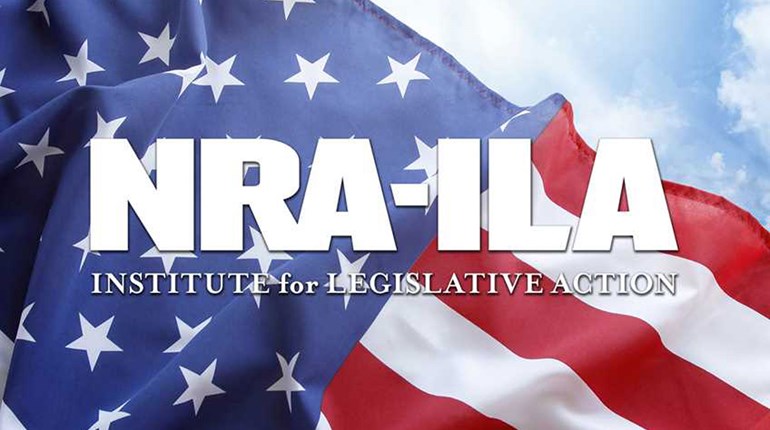
The NRA-backed lawsuit challenging the Bureau of Alcohol, Tobacco, Firearms and Explosive’s (ATF) new classification of braced pistols as “short-barreled rifles” (SBRs) is a big one, and includes half of the states in the nation as plaintiffs.
Filed in North Dakota, the case, Firearms Regulatory Accountability Coalition, Inc. v. Merrick Garland, claims the ATF greatly overstepped its boundaries by reclassifying braced pistols under the National Firearms Act (NFA).
A deep dive into the guts of the lawsuit reveals some interesting perspective into the new ATF Rule, how it came to be and where it runs afoul of the U.S. Constitution. Let’s take a look at five interesting points.
1. The ATF has repeatedly said braced pistols are not NFA firearms.
The question of whether braced pistols fall under the NFA’s jurisdiction has been coming up for the past several years, and in that time, ATF has repeatedly answered, “No.”
“Following its 2012 classification, ATF issued at least 17 classification letters opining that different stabilizing brace designs did not convert pistols into short-barreled rifles,” the lawsuit states. Additionally, in 2014, the ATF even ruled that “firing a pistol [equipped with a brace] from the shoulder would not cause the pistol to be reclassified.”
According to the lawsuit, “ATF also took the same position in criminal prosecutions, advising courts that attaching stabilizing braces to a weapon would not create a short-barreled rifle subject to additional regulation under federal statutes.”
2. The ATF knew the move was a bad idea.
Under the guidance of President Joe Biden (D), the ATF began floating the idea of a reclassification of braced pistols a few years back, with a notice of proposed rulemaking released in 2021.
“Without any legislative change, the President of the United States ordered ATF to abandon a decade of practice under an established statutory framework and ‘to treat pistols modified with stabilizing braces’ as ‘subject to the National Firearms Act,’” the lawsuit states.
At the time, public input was overwhelmingly opposed to such a move. “Because the overall effect of the proposal would have been to permit ATF to subject 30 more weapons to regulation as NFA firearms or GCA short-barreled rifles, ATF received significant pushback on its change, with ‘over 217,000 comments opposed to aspects of the rule’ out of a total of 237,000,” the lawsuit states.
The ATF backed off for a bit, but after being goaded by Biden, pushed forward with the new rule last year.
3. The ruling affects millions more people than the ATF and Justice Department say it does.
The ATF estimates that about three million pistol braces are currently owned by Americans.
“By ATF’s estimate, millions of Americans have been committing felony gun crimes—with ATF’s full knowledge and express approval—for the past decade,” the lawsuit states. “However, ATF’s numbers understate the scope of the problem the Rule creates because the agency’s estimate arbitrarily stops at 2020.”
According to the lawsuit: “Indeed, based on SB Tactical’s sales from 2020 through 2023 alone, ATF’s estimate is short by more than 2.3 million braces. And that does not account for sales by other brace manufacturers.”
4. In reclassifying braced pistols as SBRs, the ATF failed to heed the statutory text by which it is bound.
“The NFA and GCA’s statutory definitions do not reach pistols equipped with stabilizing braces,” the lawsuit points out. “The statutes cover weapons manufactured as short-barreled rifles and ‘weapon[s] made from a rifle.’ Contrary to the Rule, the statutes do not cover guns manufactured as weapons other than short-barreled rifles or short-barreled guns made from weapons other than rifles.”
As the lawsuit further pointed out, Congress enacted the NFA (and later, the GCA) to regulate the shortening of long firearms in a manner that makes them more attractive for criminal use.
“The Rule, by contrast, regulates the lengthening of pistols and other short firearms through the attachment of accessories designed as orthotics that make these weapons less concealable, more accurate, and less dangerous, thereby undermining public safety.”
5. The rule is also unconstitutional under the Second Amendment.
While much of the lawsuit focuses on the ATF overstepping bounds of administrative procedure and the agency being an enforcement body rather than a legislative one, Second Amendment considerations also enter the equation and are equally important.
“With millions of stabilizing braces in circulation—even by ATF’s conservative estimate—braced weapons are plainly in ‘common use’ and thus protected by the Second Amendment,” the lawsuit states. “The doctrine of constitutional avoidance thus requires reading the NFA and the GCA to avoid placing onerous restrictions on these weapons.”
The lawsuit asks the court to declare ATF’s new rule unlawful and set it aside, along with preliminarily and permanently enjoining the ATF from enforcing the rule.


































